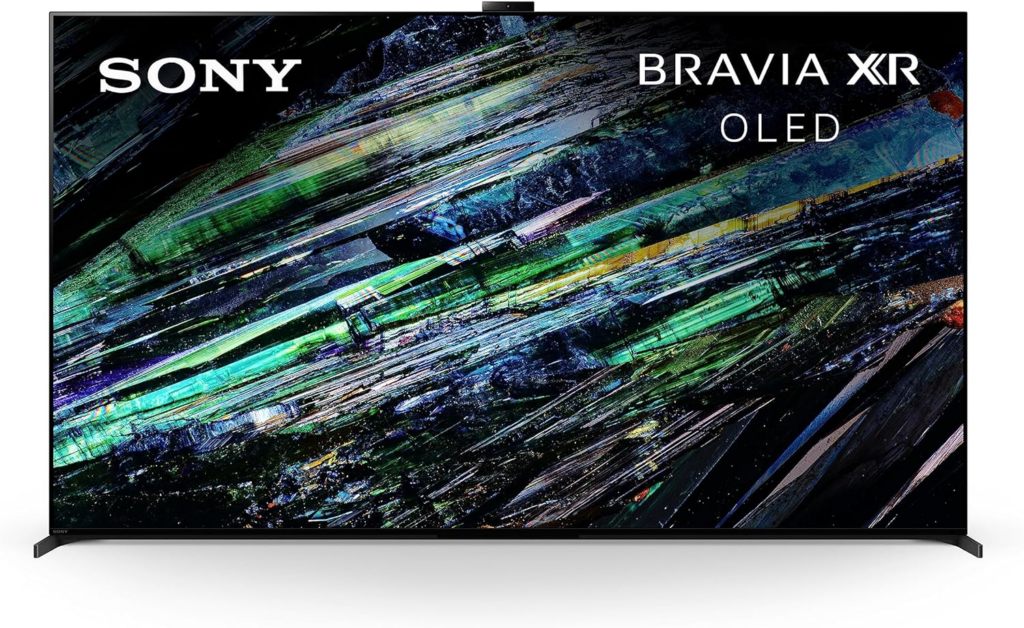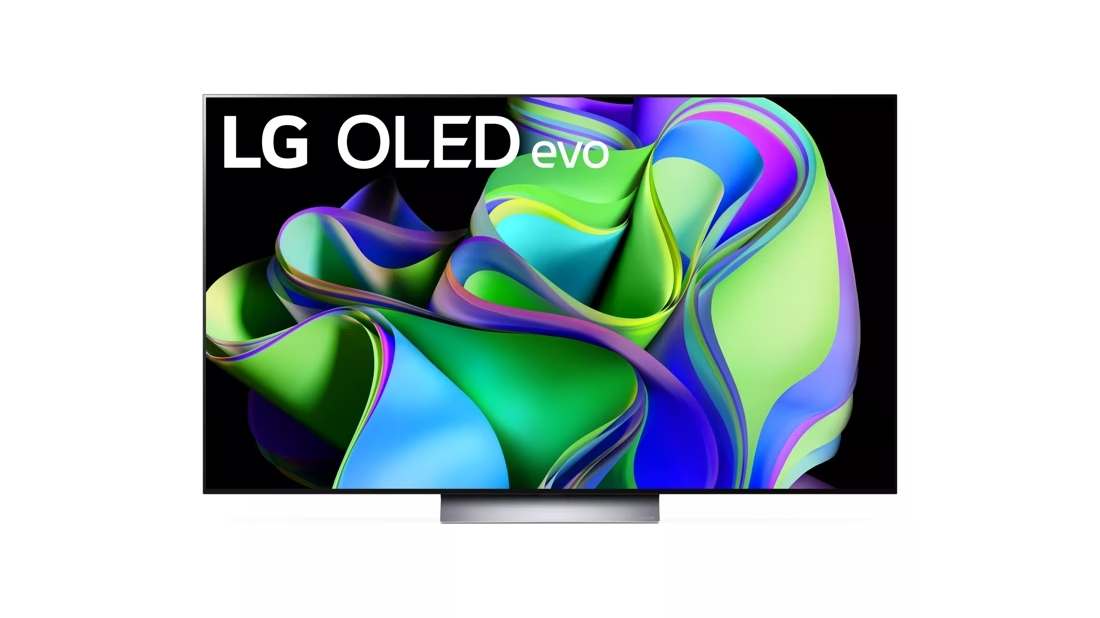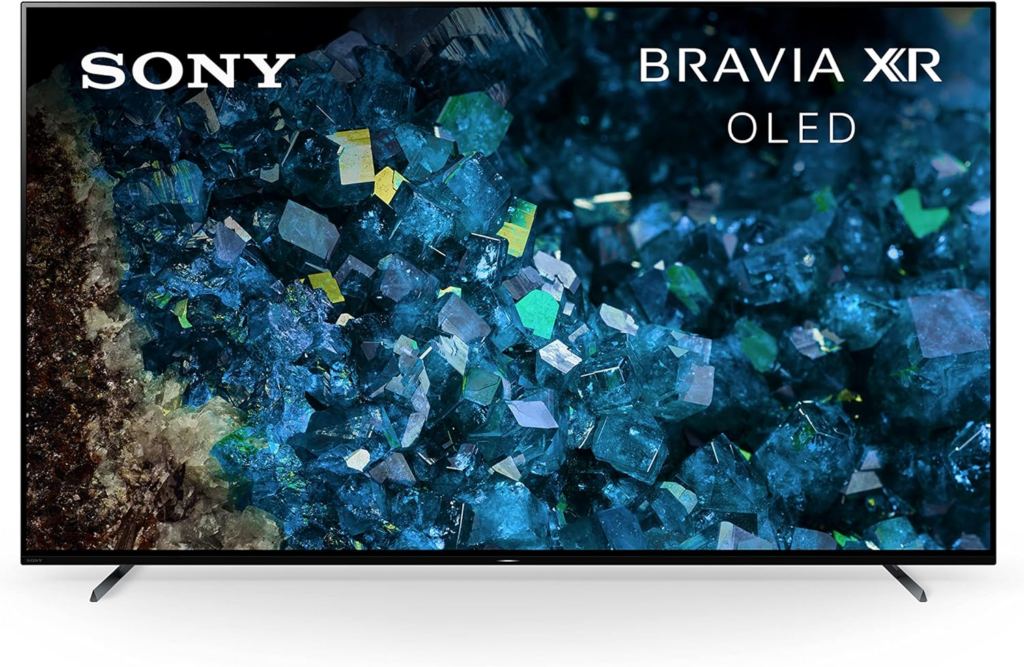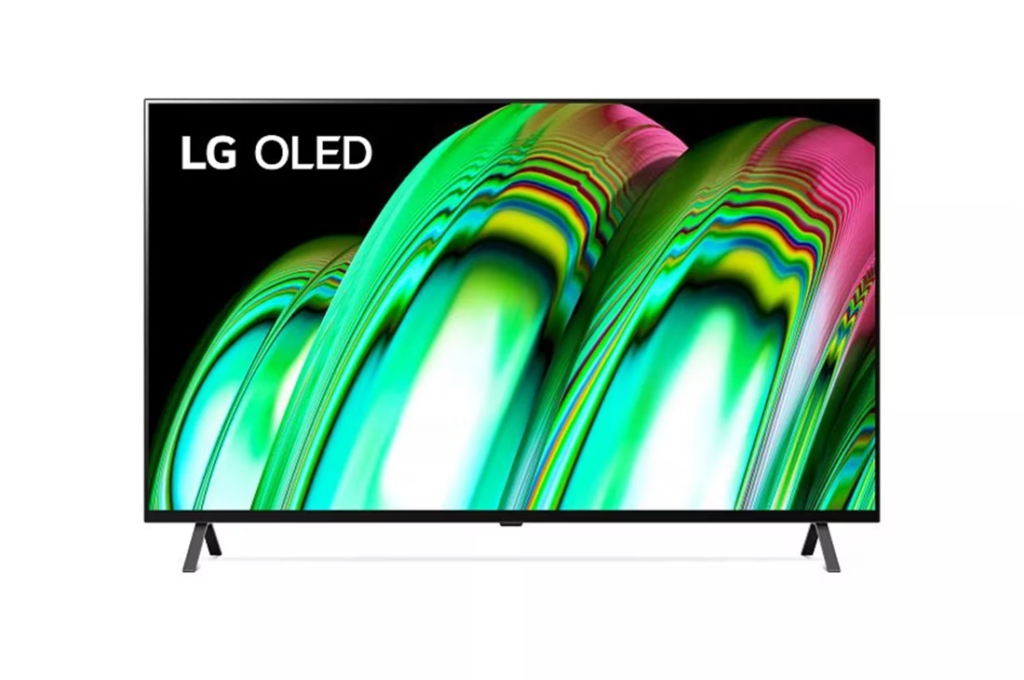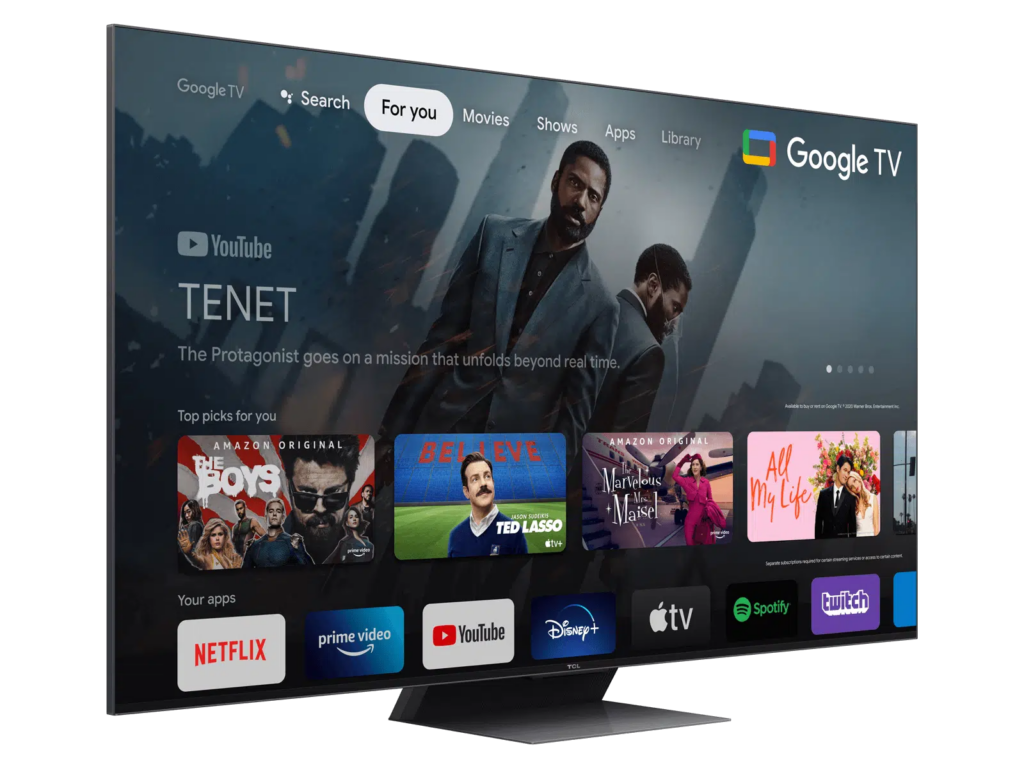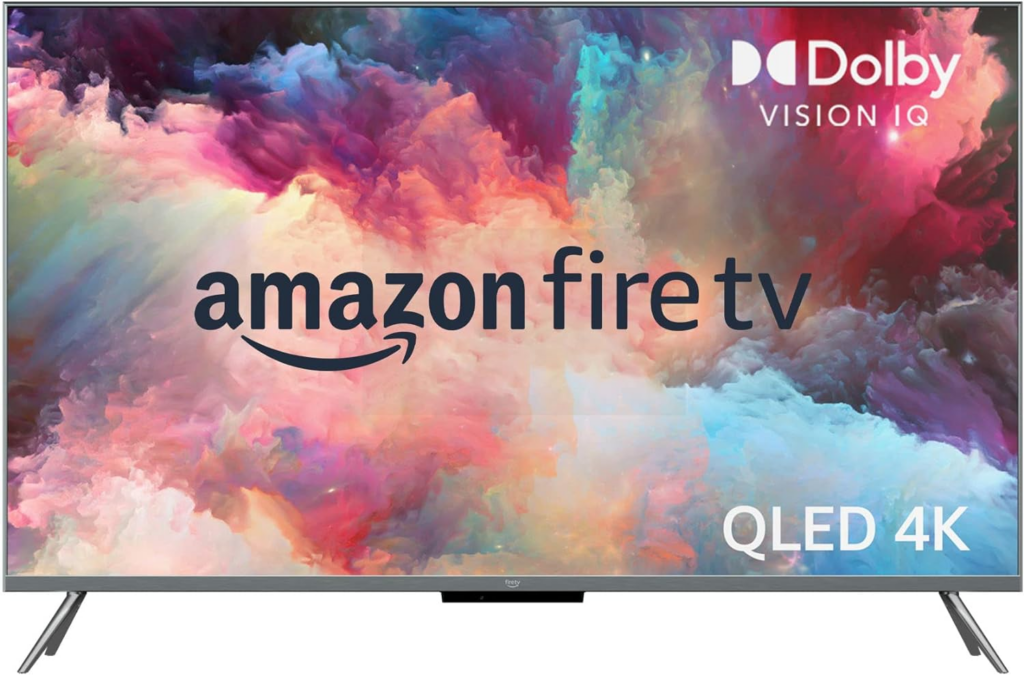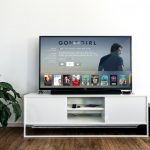Discover the ultimate 55-inch OLED TV for striking visuals and balanced size.
The 55-inch television is a big hit with the crowd. This is the size to pick for when you want a good medium between a 65-inch TV, which many may consider too enormous, and a 50-inch TV, which is far more cinematically impactful than the former.
At this size, the best performance and features are available. OLED TVs smaller than 55 inches are available, however they are not as bright as their larger counterparts. When LCD televisions go smaller than 55 inches, they also lose some of their technological capabilities. In short, a 55-inch TV provides you with many more alternatives. The problem with having so many options is that it can be extremely difficult to choose the appropriate TV for you.
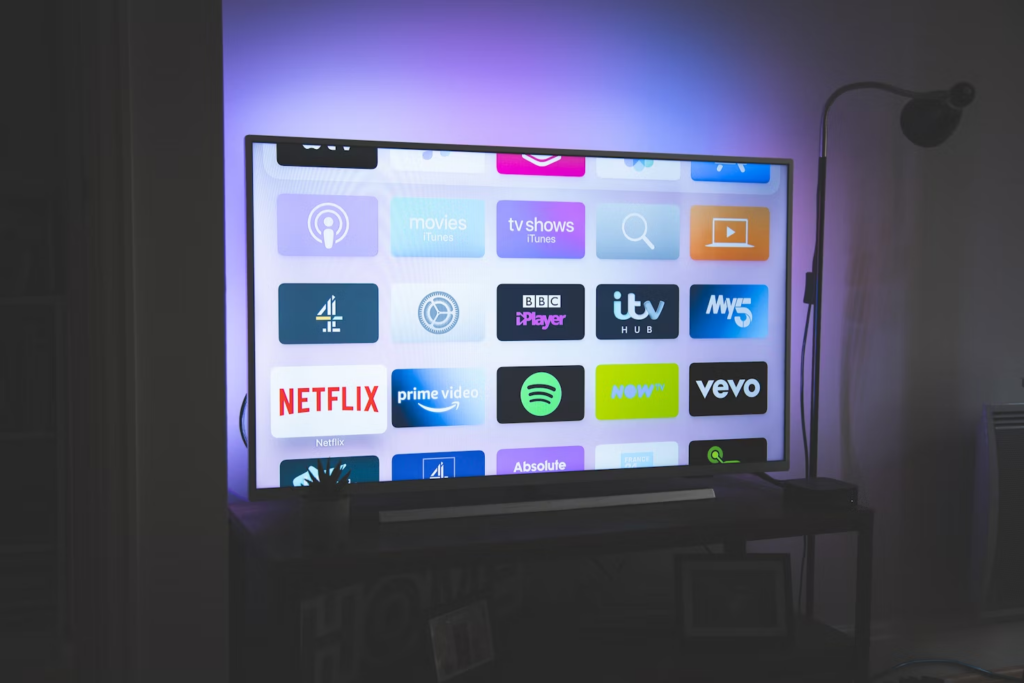
The title “best 55-inch OLED TV” is coveted. OLED TVs are prized for their superior image reproduction, incredible motion processing, and cutting-edge upscaling. With unrivalled black levels and superb contrast, they provide a cinematic experience for a price comparable to a typical LED-LCD or QLED TV. The good news is that OLED TVs are currently the greatest TV technology at a reasonable price.
The Samsung S95C OLED, our current top-rated OLED TV, has a QD-OLED panel that is brighter than most other OLED TVs with WOLED panels and costs less than OLED TVs from Sony or LG from previous years. Do you want to stick with your LG or Sony? Not an issue. Both have their own QD-OLED or third-generation META panel OLED TVs.
OLED TVs face stiff competition from new Mini-LED TVs, which provide excellent levels of contrast and brightness while producing slightly less remarkable black levels. Also, while considerably more expensive, micro LED TVs provide a better experience than OLED TVs at a price that most of us would never consider paying on a new TV. We saw a number of new OLED TVs announced for 2024, like the LG C4 OLED, but now is a wonderful time to buy a new TV if you’re looking for the greatest Super Bowl TV discounts.
Best 55-inch OLED TVs in 2024
Samsung S95C OLED
SPECIFICATIONS:
- Available Screen sizes: 55, 65, and 77 inches.
- Screen Type: QD-OLED.
- Refresh rate: 120Hz.4 HDMI 2.1 ports.
- Dimensions: 56.8 x 32.7 x 0.4 inches.
- Weight: 41.7 pounds.
REASONS TO BUY:
- One Connect box for cable management.
- High brightness.
- 144Hz refresh rate for PC gaming.
- SmartThings/Matter controller compatibility.
REASONS TO AVOID:
- No Dolby Vision.
- Average built-in audio.
Samsung is back in the OLED game, and their flagship S95C OLED is the best on the market. It’s a new QD-OLED model that outperforms the competition in terms of color saturation and brightness, as evidenced by our tests. We measured a 9.2ms lag time using a Leo Bodnar 4K Lag Tester, indicating that when paired with a PS5 or Xbox Series X, the TV will provide responsive gameplay.
On the picture quality front, the S95C covers 141.5% of the Rec 709 color space (some of the best color saturation we’ve seen on a TV) and has a Delta-E accuracy score of 1.4, indicating that colors are quite accurate.
Our tests revealed that it’s 30% brighter than the Samsung S95B OLED and nearly double the brightness of last year’s LG OLED TVs. Our test findings and anecdotal evidence have established beyond any doubt that this is the greatest OLED TV available for purchase right now, bar none.
LG G3 OLED
SPECIFICATIONS:
- Available Screen sizes: 55, 65, 77, and 83 inches.
- Screen type: OLED.
- Refresh rate: 120Hz.
- HDMI ports: four: HDMI 2.1 (1eARC).
- Dimensions: 56.7 x 32.3 x 1 inches.
- Weight: 61.9 pounds.
REASONS TO BUY:
- Superior OLED brightness.
- Superior picture quality.
- Stunning physical design.
- Robust smart platform.
REASONS TO AVOID:
- Poor sound quality.
- Subpar HDR color.
- Lack of compatibility for HDR10+.
Samsung isn’t the only option out there. The LG G3 OLED provides a wonderful experience and performed very well in our tests. What makes it better than the Samsung? LG’s webOS smart platform is easy to use, and it includes a wall-mounting bracket, which gives the G3 its gallery design.
So, why is it second? Its greater price is undeniable, and we believe QD-OLED outperforms LG’s 3rd Generation OLED panels. It’s a tight call, and lovers of LG OLED TVs will find enough to like here, but the G3 OLED is now ranked second.
Sony Bravia XR A95L OLED
SPECIFICATIONS:
- Available Screen sizes: 55, 65, and 77.
- Screen Type: QD-OLED.
- Refresh rate: 120Hz.
- HDMI ports: 4 (2 HDMI 2.1 and 2 HDMI 2.0).
- Dimensions: 56.9 x 32.8 x 1.4 inches Weight: 51.6 pounds.
REASONS TO BUY:
- Outstanding picture quality.
- Excellent sound.
- User-friendly Google TV interface.
- Convenient remote control equipped with an ATSC 3.0 tuner.
REASONS TO AVOID:
- Only two HDMI 2.1 ports.
- Input lag is not the lowest available.
- Input lag is relatively significant.
The top choices on our list are there because we believe they provide the best value for your money. However, if money is not an issue in your purchasing decision, Sony’s A95L OLED should definitely be considered. Its image is not only decent, but really stunning. Everything we viewed on it during our testing appeared well than in the theatres, thanks to its flawless black levels and motion processing.
Its superior picture processing and audio capabilities, as well as support for Google TV, help to justify the premium price. Google TV outperforms LG’s WebOS and Samsung’s Tizen in terms of recommending material based on shows and films you’ve already enjoyed, and it’s simple to customize through the settings.
With a Delta E of 2.856 right out of the box, it doesn’t take much to have colors looking their best, but Google TV doesn’t make additional adjusting any more difficult than necessary.
LG C3 OLED
SPECIFICATIONS:
- Available Screen sizes: 42, 48, 55, 65, 77, and 83 inches.
- Screen type: OLED.
- Refresh rate: 120Hz.HDMI ports: 4 HDMI 2.1, 1 eARC.
- Dimensions: 56.7 x 32.5 x 1.8 inches.
- Weight: 32.6 pounds.
REASONS TO BUY:
- Excellent visual quality.
- Improved smart interface.
- Outstanding gaming features and performance.
REASONS TO AVOID:
- Not LG’s brightest OLED TV.
- Lacks ATSC 3.0 tuner.
- Sound quality is average at best.
OLED has long been associated with adjectives like “expensive” because to its exorbitant sticker costs. Today, however, OLED TVs are not considerably more expensive than their mid-range Mini-LED rivals. The LG C3 OLED demonstrates this concept by costing less than $1,000 for the 42-inch and 48-inch variants, while remaining competitively priced at 55-inch and 65-inch screen sizes. The C3’s diversity of screen sizes and price points make it a viable choice if you’re hesitant to spend a lot of money on an OLED.
Before replacing your 65-inch TV in your living room, you might try out a smaller model to see how you like it. The good news is that, other from slight variances in peak brightness, all of the models have comparable specifications. They all support 120Hz native refresh rates and have four full-featured HDMI 2.1 connections. In our tests, the LG C3 achieved approximately 820 nits of peak brightness and covered 98.98% of the UHDA-P3 Color Gamut. That is a step down from the LG G3 stated above, but still rather impressive.
Sony Bravia XR A80L
SPECIFICATIONS:
- Available Screen sizes: 55, 65, and 77 inches.
- Screen type: OLED.
- Refresh rate: 120Hz.
- HDMI ports: 4 (two HDMI 2.1).
- Dimensions: 48.38 by 28.13 by 2.13 inches.
- Weight: 39.5 pounds.
REASONS TO BUY:
- High picture quality.
- Superior sound quality.
- Google TV smart interface.
REASONS TO AVOID:
- Not the brightest OLED TV.
- Limited HDMI 2.1 connections.
- High input latency.
If you’ve ever had trouble hearing dialogue on your favorite show or movie, you’ll understand that sound is just as vital as visual quality. Fortunately, the Sony A80L performs admirably in both categories. Its graphics and audio are excellent, and because it is positioned lower in the list than the A95L stated above, it is not nearly as expensive.
However, it ranks lower on our list because it is not the brightest OLED (that honor goes to either the Samsung S95C or Sony A95L) and its specifications are slightly less powerful than the models above it. You still get Google TV, which is a significant advantage, as well as the excellent black levels that OLED has grown to be known for.
LG A2 OLED
SPECIFICATIONS:
- Available screen sizes: 48, 55, and 65 inches.
- Screen type: OLED.
- Refresh rate: 60 Hz.3 HDMI 2.0 ports.
- Dimensions: 24.4 by 42.1 by 1.8 inches.
- Weight: 25.4 pounds.
REASONS TO BUY:
- Excellent visual quality.
- Above-average sound.
- Low input latency.
REASONS TO AVOID:
- Refresh rate limited to 60 Hz .
- No HDMI 2.1 ports.
- Limited brightness.
The LG A2 OLED is the cheapest OLED TV available. Trust us; we’ve checked several times. For many people who want to see what OLED looks like but aren’t concerned with motion processing performance, upscaling, or color accuracy, it’s the cheapest ticket in town. It’s plainly limited by its lower specification sheet, but it compensates by costing roughly $500 during major sale holidays.
So, what additional concessions are there? Not only is the display 60Hz, but the A2 does not have the latest HDMI 2.1 connections. It has the lowest peak brightness of any OLED TV we tested, at approximately 560 nits in HDR and 200 nits in SDR.
It also has the lowest-end CPU in any LG OLED. Not to add that it is older than both the LG G3 and C3 OLED displays. Some people will dismiss these performance differences as insignificant, which is perfectly OK. If you simply want an OLED TV at the lowest possible cost, the A2 OLED is the epitome of OLED affordability.
TCL C845K
SPECIFICATIONS:
- Screen size: 55″ (also available in 65″, 75″, and 85″).
- Type: QLED Backlight: Mini-LED.
- Resolution: 4K.
- HDR Formats: HLG, HDR10, HDR10+, and Dolby Vision.
- Operating System: Google TV.
- HDMI inputs: four (2 x 48Gbps HDMI 2.1).
- Gaming features include 4K/120Hz, VRR, ALLM, and Dolby Vision game mode.
- Dimensions (without stand): 72 x 123 x 7.2 cm.
REASONS TO BUY:
- Bright vibrant display.
- Extensive gaming options.
- Excellent value.
REASONS TO AVOID:
- Requires precise setup.
- Some HDR photographs may exhibit minor clouding.
- The subwoofer occasionally buzzes.
TCL is determined to shake up the TV business by giving outstanding specs at rates significantly lower than those of the big manufacturers – and by committing to Mini LED over the more popular OLED. The C845K fully captures the company’s objectives and is easily its best set yet.
This Quantum Dot TV features a Mini LED backlight with hundreds of dimming zones and a stated peak brightness of 2000 nits. Those are impressive results for any TV, let alone one at the C845K price point. A TV should never be judged only on its specifications, but throughout testing, we discovered this TCL to be an incredibly impressive performer for the price. Those huge numbers are supported by a big performance with superb punch, richness, and vibrancy, but TCL has also taken care to calibrate the C845K to give nuance in shading and colors when necessary.
Amazon Fire TV Omni QLED
SPECIFICATIONS:
- Screen size: 55 inches (also available in 43, 50, 65, and 75).
- Type: QLED Resolution: 4K.
- HDR formats include HLG, HDR10, HDR10+, and Dolby Vision.
- Operating system: Fire. OSHDMI inputs include x4
- HDMI. 2.1: No.
- Gaming features: VRR, ALLM, and Dolby Vision gaming mode.
- Dimensions (without stand): 73 x 123 x 8.4 cm.
REASONS TO BUY:
- Consistent, balanced visual performance.
- Excellent value for money.
- Clear sound.
REASONS TO AVOID:
- Lack of detail, especially in shadows.
- Smeary motion.
Of course, one of the Omni QLED’s primary selling features is the built-in Fire OS. Why buy a TV and a Fire TV stick when you can have both in one? The fact that this isn’t a super-basic TV adds to its attractiveness, since it has some more advanced characteristics that are typically found only in the class above.
So, as the name implies, this is a Quantum Dot TV with a backlight that lacks Mini LEDs but does benefit from local dimming, which allows the set to better control the light to different sections of the picture, resulting in improved contrast. This isn’t a particularly stunning performer, however.
Amazon has decided that rather than forcing the TV to perform feats for which it is simply incapable (a common mistake made by low-cost TVs), it will carefully balance dynamics and subtleties. Colors are vivid when needed, but they may also be delicate and nuanced when necessary. Skin tones are a little richer than is natural, but not noticeably so. Overall, if you want a low-cost TV that does everything in a balanced, mature manner, the Omni QLED is an excellent choice.
Frequently Asked Questions (FAQs)
How much do OLED televisions cost?
The LG C1 OLED and the Vizio OLED TV are the cheapest 4K OLED TVs available. Both are priced at roughly $1,299 for the 55-inch model as standard, but they may sometimes be found for less than $1,000.
The bulk of OLED TVs in the 55- and 65-inch sizes cost between $1,500 and $2,000, but luxury versions sometimes cost more, and higher screen sizes can regularly sell for $3,000 or more.
We’re hopeful prices will continue to decline as OLED panel yields increase and we see smaller and smaller models, such as the upcoming 20-inch OLED screens LG Display is working on.
What is an OLED?
OLED is an abbreviation for Organic Light Emitting Diode, a display technology that uses organic compounds to create clusters of red, green, blue, and white points of light to form the individual pixels of a television. On a 4K TV with a resolution of 3840 x 2160, a single OLED screen will contain 8.29 million pixels. And, unlike normal LCD TVs, each of those pixels generates its own light and can be independently switched on or off, brightened or dimmed.
Because of its pixel-level brightness control, OLED provides the highest contrast of any display technology, with neighboring pixels giving anything from extreme brightness to true black, as well as every color imaginable.
As a result, OLED TVs typically exceed the majority of LED-lit LCD TVs, regardless of whether they use standard LCD panels or incorporate picture-enhancing features such as quantum dots (commonly known as QLED) or discrete dimming zones.
However, some LED technologies, such as the superb Samsung Q90A, are finally catching up. However, in terms of picture quality, OLED remains the most reliable TV technology.
Are OLED televisions worth purchasing?
If you want a truly amazing television, OLED is a great option. It provides greater image quality than regular LCD TVs, and with prices dropping year after year, they are no longer prohibitively expensive. In testing and evaluations, OLED TVs consistently delivered some of the highest picture quality available.
In several cases, LCDs outperform other technologies. The brightness of OLED TVs is no match for the greater intensity that can be produced with an LED backlight, and LCD sets do not face the same risk of burn-in or color drift that OLEDs do over time. However, in almost every other aspect, from viewing angles to color accuracy, OLED televisions match or outperform LCD-based competition.
However, there is significant debate over whether the better quality is worth the additional cost. Why spend $1,000 or more on an OLED TV when 4K ones cost less than $500? There is a compelling rationale for paying less for equivalent, if not identical, quality. However, if you want the greatest color, contrast, and overall quality available from a television today, OLED is the way to go?
How to select the best OLED TVs?
The above collection of OLED TVs provides an embarrassment of riches for TV buyers to choose from, including everything from basic functionality to advanced smart features and premium styles.
Price will be the most important consideration in most shoppers’ purchasing decisions. When it comes to OLED TVs, there are three distinct price ranges to choose from.
For starters, there are more economical models that cost less than $1,500 (and even less than $1,000), such as the Vizio OLED TV, as well as the lowest screen size, the 48-inch LG C1 OLED (and keep an eye out for the new 42-inch LG C2, which will be available later in 2022).
More mainstream OLED TVs cost between $1,500 and $2,000, allowing you to obtain a decent 55- or 65-inch model. Premium models will cost more than $2,000, with larger screen sizes costing even more.
Other distinctions include physical designs, such as the Vizio OLED TV’s compact pedestal base and the LG C1, as well as the LG G1 OLED’s ultra-slim wall-hanging design.
Smart features are also a differentiation. LG sets provide a fairly uniform experience across all of their models thanks to the webOS platform, but Sony’s Android TV and Vizio SmartCast sets have their own pros and weaknesses. Sony’s OLED TVs run Android TV, which provides a wide range of apps and services, as well as Google-powered features such as Google Assistant voice control and built-in Chromecast connectivity. The Vizio OLED TV, on the other hand, has a Chromecast built-in but has a smaller variety of apps and rudimentary functionality.
Looking for a specific TV brand, price range, or screen size? Check out our recommendations for the greatest TVs in each.
Which smart TV features and streaming apps do you require?
As with 4K, it is today difficult to find a TV that does not feature a smart platform loaded with streaming apps. Netflix and Amazon Prime Video will be available on almost every television, and Disney+ is on its way to being as ubiquitous. Apple TV (excellent for pay-as-you-go films and the Apple TV+ subscription service) is also getting more popular. You’d think that BBC iPlayer, ITV Player, All 4 and My5 would be accessible on every TV in the UK, but there always appears to be one brand missing (LG in 2020 and Sony in 2021), so check before you buy if any of those are important to you.



